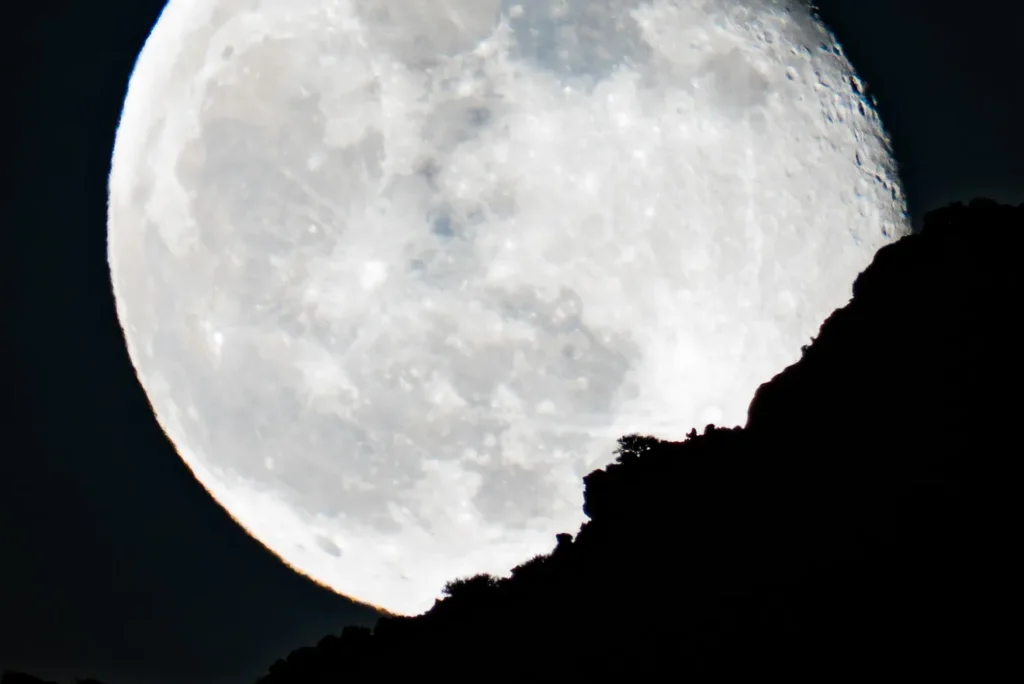On November 15, 2024, stargazers across the United States will witness an extraordinary sight in the night sky: the Beaver Moon, the last supermoon of the year. This full moon offers not only an awe-inspiring visual experience but also carries rich historical and cultural significance. From its origins to the optimal ways to observe it, here’s a comprehensive look at what to expect from this unique celestial event.
The Beaver Moon: A Name Rooted in Tradition
The November full moon is traditionally known as the Beaver Moon, a name that dates back to Native American and early European settlers. In late fall, beavers become particularly active, building and fortifying their dams in preparation for the approaching winter. This industrious activity inspired the moon’s name, symbolizing the onset of winter preparations. For early communities, the Beaver Moon marked a time for finalizing harvests, preserving food, and readying for the colder months ahead. This name is also sometimes interchanged with the “Frost Moon” or “Mourning Moon,” as it reflects the arrival of frost and the somber, reflective transition into winter.

The Supermoon Effect
The November 2024 Beaver Moon will also be a supermoon, meaning it reaches its closest point to Earth in its elliptical orbit, known as perigee. This phenomenon makes the moon appear approximately 7% larger and 16% brighter than an average full moon, casting an unusually intense glow over the landscape. This supermoon effect is caused by the moon’s slightly oval orbit around Earth, which brings it closer to us at certain points, making it look particularly stunning. For those keen on lunar photography or simply appreciating the night sky, this supermoon is a sight not to be missed.
How to View the Beaver Moon in the United States
- Moonrise and Peak Illumination: The Beaver Moon will reach peak illumination at 4:29 PM EST (21:29 UTC). Although peak brightness occurs during the day, the best time to observe it will be as the moon rises after sunset.
- Moonrise Direction: Look towards the eastern horizon for the moonrise, where it will appear against the fading twilight sky, creating a beautiful contrast.
- Optimal Viewing Time: About 20-30 minutes after sunset, the moon will start to ascend fully in the sky. This timing varies slightly by location, so checking a local moonrise time is advised.
Ideal Viewing Conditions
For the best viewing experience, follow these tips:
- Choose a Dark Location: Find a spot away from city lights to reduce light pollution and maximize the moon’s visibility.
- Check the Weather: Clear skies are essential for an unobstructed view of the Beaver Moon; clouds can easily obscure this celestial sight.
- Use Binoculars or a Telescope: While the full moon is stunning to the naked eye, binoculars or a telescope can reveal detailed features on the lunar surface, enhancing the viewing experience.
The Seasonal and Cultural Significance of November’s Full Moon
Beyond its name, the Beaver Moon holds deep symbolic value in different cultures. In the northern hemisphere, this full moon signifies the transition from the abundance of autumn to the stillness of winter. It is traditionally associated with introspection, self-reflection, and preparing for the colder months ahead. Known as the “Mourning Moon” in some traditions, it symbolizes a time of remembrance, introspection, and planning for the future.
In other cultures, November’s full moon is called the “Frost Moon,” marking the first hard frosts of the season. Each name reflects a cultural relationship with the natural cycles that govern the landscape, human behavior, and wildlife activities.

The Effects of the Beaver Moon on People and Nature
Historically, full moons have been associated with various effects on human behavior and nature. Folklore suggests that full moons can influence emotions, with people experiencing heightened creativity, restlessness, or introspection.
In the natural world, animals may also exhibit altered behaviors during a full moon. Nocturnal creatures are often more active, taking advantage of the moon’s brightness. For wildlife, the Beaver Moon is a time of bustling activity as animals prepare for the scarcity of winter, echoing the symbolism of beavers gathering resources.
From an astronomical perspective, this supermoon provides an opportunity to observe and understand the moon’s relationship with Earth. Supermoons slightly enhance gravitational pull, leading to minor increases in ocean tides, a reminder of the interconnectedness of celestial bodies and our planet.
Conclusion: Don’t Miss the Beaver Moon
The Beaver Moon of November 15, 2024, promises a memorable experience for anyone who enjoys the magic of a bright, full moonlit night. Its supermoon status will make it larger and more luminous than usual, adding to the allure of this celestial event. Whether you’re drawn to the scientific wonder of a supermoon or the cultural stories surrounding the Beaver Moon, this full moon offers a moment to pause, appreciate, and connect with the rhythms of nature. Prepare your viewing spot, check the weather, and let the Beaver Moon cast its light on a crisp November evening.